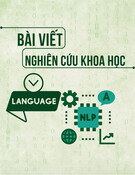
TNU Journal of Science and Technology 230(04): 187 - 195
http://jst.tnu.edu.vn 187 Email: jst@tnu.edu.vn
ELT TEACHERS’ ACCEPTANCE OF CHATGPT AS A WRITING ASSISTANT
IN GENERAL ENGLISH COURSES
Pham Minh Toan1, Bui Thi Thuc Quyen2*, Le Thi Hang3, Dao Thi Hong Hanh4
1Van Hien University, Ho Chi Minh City, 2Open University, Ho Chi Minh City
3TNU - School of Foreign Languages, 4College of Technology and Industrial Management
ARTICLE INFO ABSTRACT
Received:
15/02/2025
The rapid advancement of artificial intelligence has introduced innovative
tools like ChatGPT, which are increasingly
supporting English language
teachers in teaching languages. Writing skills have become a key area
where the potential of ChatGPT can be effectively harnessed. Its ability to
assist teachers in delivering structured and systematic writing lessons
makes it a
valuable asset in modern classrooms. Despite its benefits,
concerns about academic honesty, data privacy, feedback accuracy, and
reliability affect teacher readiness and the integration of ChatGPT as a
writing assistant in general English courses. This pa
per aimed to explore
ELT teachers’ acceptance of ChatGPT in teaching writing. This study
employed a qualitative research design in which six teachers at College A
in Ho Chi Minh City participated in semi-
structured interviews. The
collected data was analyz
ed using qualitative thematic analysis to examine
their acceptance of ChatGPT. Findings reveal that teachers generally held
positive attitudes toward ChatGPT, as they appreciated its ease of use and
usefulness, which are two key factors in the Technology A
cceptance
Model. The study recommends further research on institutional support,
professional training, and contextual factors influencing teacher
acceptance to enhance the effective integration of ChatGPT in teaching
writing.
Revised:
19/03/2025
Published:
21/03/2025
KEYWORDS
Artificial intelligence
ChatGPT
English language teachers
Writing assistant
General English courses
SỰ CHẤP NHẬN CỦA GIÁO VIÊN TIẾNG ANH ĐỐI VỚI CHATGPT NHƯ
MỘT TRỢ LÝ VIẾT TRONG CÁC KHÓA HỌC TIẾNG ANH TỔNG QUÁT
Phạm Minh Toàn1, Bùi Thị Thục Quyên2*, Lê Thị Hằng3, Đào Thị Hồng Hạnh4
1Trường Đại học Văn Hiến, Thành phố Hồ Chí Minh, 2Trường Đại học Mở, Thành phố Hồ Chí Minh
3
Trư
ờ
ng Ngo
ạ
i
n
g
ữ
-
Đ
H
Thái Nguyên,
4
Trư
ờ
ng Cao
đ
ẳ
ng
Bán công
Công
n
gh
ệ
và Qu
ả
n
t
r
ị
d
oanh
n
ghi
ệ
p
THÔNG TIN BÀI BÁO TÓM TẮT
Ngày nhậ
n bài:
15/02/2025
Sự phát triển nhanh chóng của trí tuệ nhân tạo đã mang đến nhữ
ng công
cụ đổi mới như ChatGPT, hỗ trợ giáo viên tiếng Anh trong giảng dạy, đặ
c
biệt là kỹ năng viết. Nhờ khả năng cung cấp nội dung có hệ thố
ng,
ChatGPT giúp giáo viên xây dựng bài giảng hiệu quả
hơn. Tuy nhiên, bên
cạnh lợi ích, vẫn tồn tại lo ngại về tính trung thực học thuật, bảo mật dữ
liệu và độ chính xác của phản hồi, ảnh hưởng đến mức độ sẵn sàng ứ
ng
dụng công cụ này. Nghiên cứu này nhằm đánh giá mức độ chấp nhậ
n
ChatGPT của giáo viên dạy tiếng Anh thông qua phương pháp đị
nh tính,
với sáu giáo viên tại trường A, Thành phố Hồ Chí Minh tham gia phỏ
ng
vấn bán cấu trúc. Dữ liệu được phân tích theo phương pháp phân tích chủ
đề, cho thấy giáo viên nhìn chung có thái độ tích cự
c, đánh giá cao tính
tiện lợi và hữu ích của ChatGPT – hai yếu tố quan trọ
ng trong Mô hình
Chấp nhận Công nghệ. Nghiên cứu đề xuất tiếp tục khám phá các yếu tố
như hỗ trợ từ tổ chức, đào tạo chuyên môn và bối cảnh giảng dạy nhằm tố
i
ưu hóa vi
ệ
c tích h
ợ
p ChatGPT vào gi
ả
ng d
ạ
y k
ỹ
năng vi
ế
t.
Ngày hoàn thiệ
n:
19/03/2025
Ngày đăng:
21/03/2025
TỪ KHÓA
Trí tuệ nhân tạo
ChatGPT
Giáo viên giảng dạy tiếng Anh
Trợ lý viết
Khóa học tiếng Anh tổng quát
DOI: https://doi.org/10.34238/tnu-jst.12060
* Corresponding author. Email: quyen.btt@ou.edu.vn

TNU Journal of Science and Technology 230(04): 187 - 195
http://jst.tnu.edu.vn 188 Email: jst@tnu.edu.vn
1. Introduction
In recent years, the integration of AI into education has transformed traditional teaching
practices, particularly in language instruction [1]. Among AI advancements, ChatGPT (Chat
Generative Pre-Trained Transformer), an advanced generative language model developed by
OpenAI, has emerged as a valuable tool in teaching languages, especially in teaching writing skills
[2]. Its capabilities in understanding and generating human-like text enable personalized feedback
and scaffolded support, which enhances engagement and writing skills [3]. Introduced in
November 2022, ChatGPT is an advanced AI-powered chatbot developed by OpenAI. It enables
users to interact naturally across various topics without conversational limitations. In education,
ChatGPT serves as a valuable tool for instructors by supporting teaching activities, assisting with
research information, and keeping up with emerging trends [4]. AI is widely adopted by teachers
in teaching practices. Khabib [5] noted that AI-driven technologies have significantly influenced
various aspects of education and have recently gained increasing attention in the development of
AI-powered digital writing tools. ChatGPT is an AI-driven English writing assistant capable of
generating human-like content.
The theoretical foundations of ChatGPT as a writing assistant are rooted in social
constructivism, which emphasizes its role in scaffolding writing. Scaffolding, introduced by Wood
et al. [6] and aligned with Vygotsky’s Zone of Proximal Development, provides temporary support
to learners, which is gradually reduced as they gain proficiency. This approach enhances learning by
reducing anxiety, encouraging collaboration, and fostering communication [7]. ChatGPT mirrors
these practices by offering instant feedback, generating model texts, and facilitating reflective
discussions. Several scaffolding strategies illustrate ChatGPT’s role in writing development.
Cognitive scaffolding is seen in its timely, personalized feedback that helps address writing
weaknesses [8]. Content scaffolding appears in its model essays, improving grammar, vocabulary,
and structure [9]. Meta-cognitive scaffolding is supported through discussions on writing
organization and critical thinking [10]. Linguistic scaffolding simplifies terminology and adjusts
materials to proficiency levels, enhancing coherence [11]. These strategies align with pedagogical
practices, strengthening EFL instruction. ChatGPT also aids grammar accuracy, word choice, and
text structure [12], while supporting lesson planning by generating curriculum-aligned content,
fostering engagement, and addressing individual needs [13].
To understand how teachers accept ChatGPT, it is essential first to define the term “acceptance.”
Dillon and Morris [14] describe “acceptance” as users’ willingness to use a system, while Schade
and Schlag [15] describe “acceptance” as “a prospective judgment of measures to be introduced in
the future,” which they detail as “the target group will not yet have experienced the new measures.”
Adell [16] further defines it as “the degree to which an individual intends to use a system and,
when available, incorporate the system in his/ her driving”, while Proctor et al. [17] view
“acceptance” as stakeholders’ perception of a system’s suitability. Building on these definitions,
“technology acceptance” refers explicitly to how users perceive a technology before adopting it, as
discussed by Martin et al. [18] and Distler et al. [19], while their actions shape and are shaped by
the technology [20]. Davis [21] further defines “technology acceptance” through two key factors:
perceived usefulness (how much it enhances performance) and perceived ease of use (how
effortless it is to use). In this paper, “teacher acceptance” was defined as educators’ willingness to
adopt and integrate ChatGPT into their teaching practices, influenced by their perceptions of its
usefulness and ease of use. This means that teachers are more likely to accept ChatGPT in teaching
writing skills if they find this AI tool beneficial for enhancing student learning and easy to
incorporate into their pedagogical practices.
The Technology Acceptance Model (TAM), developed in 1986 and refined in 1989, explains
technology adoption through Perceived Usefulness (PU), Perceived Ease of Use (PEOU), Attitude
towards Using, Intention to Use (IU), and Actual Use. PU reflects the belief that technology

TNU Journal of Science and Technology 230(04): 187 - 195
http://jst.tnu.edu.vn 189 Email: jst@tnu.edu.vn
enhances performance, while PEOU refers to its perceived effortlessness. Research indicates PU
has a stronger influence on intention than attitude [22], which makes additional TAM constructs
unnecessary. Due to the focus of the study on teacher acceptance, the authors adopted a simplified
TAM, which uses only PEOU, PU, and IU to analyze ELT teachers’ acceptance of ChatGPT as a
writing assistant. PU examines the impact of ChatGPT on instruction, PEOU assesses ease of use,
and IU reflects teachers’ motivation to integrate it.
Studies on teachers’ acceptance of ChatGPT highlight key factors such as ease of use,
usefulness, and institutional support. Mutammimah et al. [23] and Strzelecki et al. [24] found that
intuitive design promotes adoption, while limited digital literacy hinders it. Har [25] and Dehghani
& Mashhadi [26] emphasized ChatGPT’s role in automating feedback, lesson planning, and student
engagement. Imran and Almusharraf [27] noted its ability to reduce workload through grammar
correction and model essay generation. Dilzhan [28] highlighted its effectiveness in adaptive
instruction by personalizing learning. However, concerns remain regarding academic integrity, AI
overreliance, and critical thinking. Alrishan [29] and Nguyen [30] identified lack of training and
institutional support as major barriers. These findings suggest that while ChatGPT offers
pedagogical benefits, successful adoption requires professional development, clear guidelines, and
structured strategies.
In summary, prior research has examined AI acceptance in ELT, particularly regarding
ChatGPT, yet gaps remain in understanding teachers’ willingness to adopt it in practice. Research
on the integration of ChatGPT in Vietnamese ELT contexts remains limited, particularly regarding
teachers’ perspectives [11]. Most studies focus on student outcomes, with limited attention to
teachers’ perceptions of ChatGPT in classroom practices. While teachers recognize its benefits,
whether positive attitudes lead to actual integration remains unclear due to limited training or
institutional constraints. Additionally, quantitative surveys may not fully capture teachers’
perspectives. Addressing these gaps, this paper examined ELT teachers’ acceptance of ChatGPT
as a writing assistant, exploring factors influencing adoption. The research question is: “How do
ELT teachers accept ChatGPT as a writing assistant in general English courses?”
2. Research method
The study employed a qualitative research design that was grounded in interpretivism [31],
focusing on teachers’ acceptance of ChatGPT in writing instruction. Semi-structured interviews
were conducted, and thematic analysis, which included manual coding, was used to provide
nuanced insights into teachers’ perceptions [32].
The study was conducted at College A in Ho Chi Minh City, a private institution offering on-
campus, in-service, and distance learning. Students used Four Corners [33] as the primary textbook
for general English courses. The course included 15 periods per semester, which focused on short
essays, formal letters, and reports. Teachers in this research context combined reading and writing,
incorporating peer review and guided exercises to enhance grammar, vocabulary, and organization.
ChatGPT was integrated as a supplementary tool for generating prompts, providing grammar
corrections, and suggesting vocabulary and structural improvements. Teachers supported students
to engage with ChatGPT for guided exercises and peer review, which made writing lessons more
interactive and efficient while introducing them to AI-based tools.
This paper employed convenience sampling for the qualitative data collection as it is a common
qualitative sampling strategy in which “settings, groups, and/or individuals that are conveniently
available and willing to participate in the study” are selected [34, p. 286]. The participants,
therefore, were selected for the interview based on convenience needed to meet the following
criteria: (1) they were English lecturers responsible for teaching writing in general English courses;
(2) they had experience using ChatGPT in writing instruction; (3) they were willing to participate
in the study. The target population of the current study consisted of 14 English teachers working
as visiting and official lecturers, 6 of whom participated in the study. The remaining participants

TNU Journal of Science and Technology 230(04): 187 - 195
http://jst.tnu.edu.vn 190 Email: jst@tnu.edu.vn
were excluded for lacking experience, availability, or willingness, ensuring the sample included
only relevant insights. Among the six interviewed teachers, the majority were male, aged 25 to 42,
with teaching experience ranging from 2 to 18 years. Four held MA degrees, while two had BA
degrees. Most reported moderate to high technological proficiency, and five had received AI
training. Only one lacked AI training, whereas the others incorporated AI techniques into their
ChatGPT-assisted teaching.
The study employed qualitative semi-structured interviews to explore their acceptance of
ChatGPT in teaching writing. Semi-structured interviews were chosen for their balance of structure
and flexibility, enabling in-depth exploration of teachers’ perspectives while allowing adjustments
based on responses [35]. A total of 14 questions were developed based on the TAM model and
adapted from Davis [21] and Al Darayseh [36], focusing on three dimensions: PEOU, PU, and IU.
First, the three-question list was designed as a warm-up section to help participants feel relaxed and
familiar with the interview process. Following this, the background section included three questions
to build trust and gather basic information, while the central section had eleven questions exploring
the technology acceptance factors of the TAM model: PEOU, PU, and IU.
Creswell and Poth [37] noted that interviews can be conducted in various formats. This study
used 60-minute online interviews via Microsoft Teams for flexibility and convenience. Conducted
in Vietnamese with a semi-formal approach, the interviews encouraged detailed responses. Semi-
structured questions allowed adjustments for smooth conversations while ensuring systematic data
collection [38]. Key points were noted during the sessions. After developing the interview
questions, the researchers conducted a pilot phase following Mertens’ [39] five-step process:
selecting participants, collecting feedback, refining questions, and testing revisions. Two pilot tests
were conducted, with a 5-day gap between the tests to allow time for feedback analysis from the
participants. Two ELT teachers participated, leading to adjustments such as clarifying “technology
integration” and merging repetitive follow-up questions. This iterative approach ensured the final
questions were clear, relevant, and streamlined.
Effective data coding is crucial for organization and analysis [40]. While Guest et al. [40]
suggested using source ID, data labels, and file names, this study replaced file names with patterns
for clarity [41]. Interview records were labeled concisely (e.g., “01_Interview” for Participant 01).
Thematic analysis identified predefined and emerging themes [42], using an inductive approach with
confirmed, translated, and reviewed transcripts. Following Braun and Clarke [42] five steps, the
researcher transcribed, coded using TAM, refined and defined themes, and structured findings into
main themes and subthemes, ensuring a comprehensive analysis.
3. Findings and discussion
3.1. Findings
The data from semi-structured interviews revealed that teachers generally had a positive attitude
toward adopting ChatGPT as a writing assistant in their teaching practice. The qualitative findings
confirmed and provided insights into teachers’ acceptance and were grouped into the following
two themes: Perceived ease of use and Perceived usefulness.
3.1.1. Perceived ease of use
Ease of accessibility
Five out of six participants emphasized that ChatGPT's minimal requirements, including an
internet connection and an account, made it highly accessible, fostering teacher acceptance. This
simplicity allowed educators with varying levels of digital proficiency to use the tool effortlessly.
For instance, one teacher noted, “I see ChatGPT as quite easy to use; just with the internet and an
account, I can start right away. This makes it extremely convenient for someone like me to access
the tool whenever I need it” (T01). Another added, “It did not require any complicated setup or

TNU Journal of Science and Technology 230(04): 187 - 195
http://jst.tnu.edu.vn 191 Email: jst@tnu.edu.vn
technical expertise, just logging in and starting with an internet connection was enough” (T04).
These responses illustrate how the ease of accessibility of ChatGPT removes barriers to adoption,
ensuring broader engagement, particularly in contexts with differing levels of digital literacy. This
highlights the pivotal role of accessibility in successfully integrating AI tools into teaching
practices.
User-friendly interface
Most interviewed teachers (4 out of 6) emphasized that ChatGPT's simple layout and intuitive
design enhanced user-friendliness. The straightforward interface allowed them to navigate the tool
quickly and focus on teaching tasks without struggling to understand its functionality. One teacher
stated, “The layout is so simple and straightforward. I did not have to look for anything; it is all clear,
and I knew exactly where to go from the start” (T01). Another remarked, “The intuitive design stood
out. I did not have to read instructions or watch tutorials; everything was easy to figure out, which
saved me a lot of time” (T05). These insights demonstrate how the design minimized confusion and
reduced the learning curve, making the tool accessible to teachers with varying levels of technological
experience. ChatGPT encouraged broader adoption by prioritizing simplicity and clarity and ensured
its effective integration into teaching practices. This underscores the critical role of user-friendly
design in promoting teacher acceptance of AI tools.
3.1.2. Perceived usefulness
Reducing teacher workload in editing
The interviews highlighted the ability of ChatGPT to reduce teachers’ workload in editing
mechanical aspects like grammar and punctuation, making the writing process more manageable
and increasing acceptance. Most participants (5 out of 6) agreed it allowed more focus on higher-
order feedback. Teacher 01 shared, “ChatGPT significantly reduces my workload […] I no longer
spend as much time on grammar or sentence structure.” However, some expressed concerns about
oversimplified corrections. Teacher 03 noted, “It might oversimplify the process, leading to less
detailed feedback,” while Teacher 04 mentioned, “Corrections might be too general, missing
personalized guidance.” While ChatGPT saves time, teachers remain cautious about its impact on
feedback quality and personalized learner support.
Increasing teachers’ motivation
The interviews revealed that ChatGPT boosted teachers’ motivation by reducing repetitive tasks
like editing, grading, and lesson planning. This allowed them to focus more on creative and
engaging aspects of teaching, increasing their enthusiasm and acceptance of the tool. Teacher 01
noted, “ChatGPT has made lesson planning much easier, which motivates me to try new methods
in my teaching.” Similarly, Teacher 02 shared, “I feel more motivated to focus on creative lesson
development and student engagement,” while Teacher 04 added, “I can spend more time designing
engaging activities for learners.” By minimizing routine tasks, ChatGPT increased teachers’
productivity and renewed their passion for teaching, further reinforcing its usefulness and
encouraging broader adoption in education.
Boosting learners’ engagement
Five out of six teacher participants noted that ChatGPT positively impacted student
engagement. Teachers appreciated how it facilitated creative lesson planning, allowing them to
design innovative activities. As Teacher 01 observed, “The interactive exercises I create using
ChatGPT have made learners more interested in participating, as they feel the tasks are more
personalized.” Teacher 02 added, “ChatGPT helps make lessons more interesting, increasing
student participation and enthusiasm for learning.” The streamlined grading and creative lesson
planning enabled by ChatGPT resulted in more engaging lessons, boosting student motivation and
involvement. This direct impact on student learning encouraged teachers to adopt the tool,
recognizing its benefits in enhancing the classroom experience.
Improving personalized learning



![Mẫu câu viết thư thân mật bằng Tiếng Anh [Chuẩn Nhất]](https://cdn.tailieu.vn/images/document/thumbnail/2025/20250708/caotiendat91211.thd2017@gmail.com/135x160/80151751961845.jpg)
![Tài liệu gợi ý viết email tiếng Anh và 35 đề thi mẫu [chuẩn SEO]](https://cdn.tailieu.vn/images/document/thumbnail/2025/20250708/caotiendat91211.thd2017@gmail.com/135x160/25321751961846.jpg)






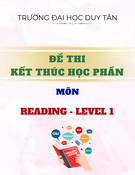
![Đề cương môn Tiếng Anh 1 [Chuẩn Nhất/Mới Nhất]](https://cdn.tailieu.vn/images/document/thumbnail/2025/20251130/cubabep141@gmail.com/135x160/51711764555685.jpg)


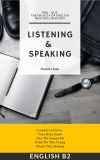
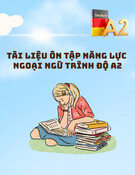

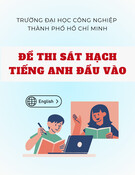
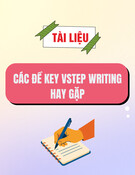

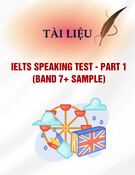
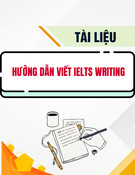
![Mẫu thư Tiếng Anh: Tài liệu [Mô tả chi tiết hơn về loại tài liệu hoặc mục đích sử dụng]](https://cdn.tailieu.vn/images/document/thumbnail/2025/20250814/vinhsannguyenphuc@gmail.com/135x160/71321755225259.jpg)
